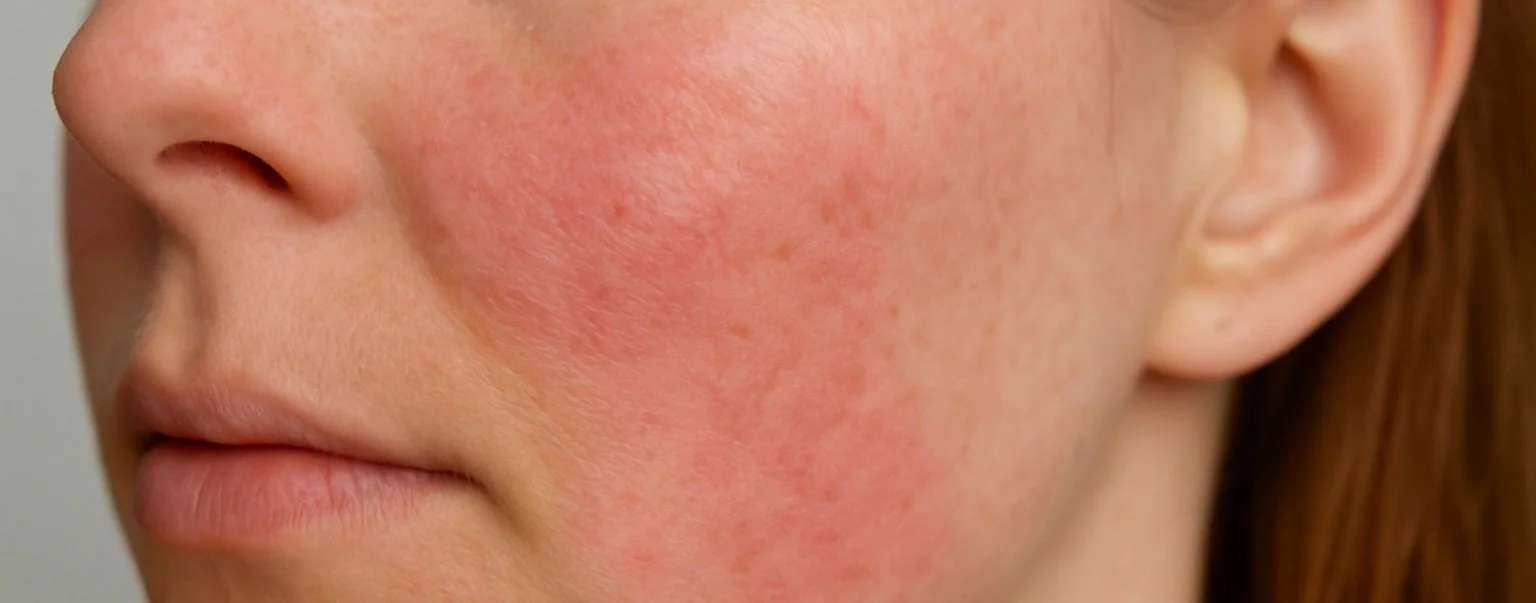Niacinamide vs. Azelaic Acid for Rosacea
Rosacea is a chronic inflammatory skin condition that often presents as persistent redness, sensitivity, visible capillaries, and in some cases, pustules.
Choosing the right actives is essential to reduce inflammation without damaging the skin barrier. Two ingredients recognised for their efficacy in rosacea-prone skin are niacinamide and azelaic acid. While both offer benefits, they work differently and have distinct tolerance profiles. In skincare, understanding the function and benefits of each ingredient can help you build a routine that truly respects and strengthens your skin.
How does azelaic acid work?
Azelaic acid is an ingredient derived from grains such as wheat or barley, with antimicrobial, keratolytic, and depigmenting properties.
Benefits for rosacea: Reduces inflammatory papules and pustules + Inhibits excess free radical production + Improves persistent redness + Has depigmenting effects on post-inflammatory hyperpigmentation.
15% Azelaic acid is effective and safe as a topical treatment for inflammatory rosacea. ● Del Rosso et al., Journal of Clinical and Aesthetic Dermatology
How does niacinamide work?
Niacinamide (Vitamin B3) is a multifunctional ingredient known for its ability to strengthen the skin barrier and reduce inflammation.
Benefits for rosacea: Reduces inflammation and redness (anti-inflammatory) + Improves barrier function, enhancing hydration + Regulates sebum production and soothes itching or tightness + Highly tolerated, even on very sensitive skin.
Creams containing 5% niacinamide significantly reduce skin sensitivity and transepidermal water loss. ● Journal of Cosmetic Dermatology (Draelos et al., 2006)
Quick comparison
Choosing between niacinamide and azelaic acid depends on your skin’s unique needs. This quick comparison helps you find the most effective and gentle solution for your rosacea.
| Characteristic | Niacinamide | Azelaic Acid |
|---|---|---|
| Type of action | Anti-inflammatory, strengthening | Antimicrobial, anti-inflammatory |
| Effectiveness on redness | High | High |
| Effectiveness on pustules | Moderate | High |
| Tolerance | Very high (ideal for sensitive skin) | Medium (may cause initial stinging) |
| Typical texture | Lightweight serums, moisturising creams | Gels, treatment creams |
| Ideal for... | Mild rosacea with sensitivity | Rosacea with pustules or pigmentation |
Which to choose for your rosacea type?
Mild or vascular rosacea (redness and visible capillaries):
→ Niacinamide, for its calming and strengthening action.Inflammatory rosacea (pustules and bumps):
→ Azelaic acid, with keratolytic and antibacterial action.Extremely sensitive rosacea:
→ Niacinamide, due to its high tolerance and anti-irritant effect.Rosacea with post-inflammatory marks:
→ Both can help, but azelaic acid has a more direct effect on pigmentation.
gentle solutions for sensitive skin.
●
gentle solutions for sensitive skin. ●
The Today Project’s approach
At The Today Project, we choose niacinamide for its versatile profile, proven efficacy, and affinity with our philosophy of conscious care. It is found in our Shine-Free Age Defying Cream, a balancing and sensorial formula that strengthens the skin at its core without aggression.
Combined with plant-derived squalane, stabilised Vitamin C, and biomimetic peptides, this cream is an ideal daily treatment for skin prone to redness, discomfort, or sensitivity.
Conclusion
Both ingredients have a valuable place in rosacea treatment. Niacinamide is an excellent starting point, especially if you are looking for a gentle, daily approach without side effects. Azelaic acid, on the other hand, is a potent tool when dealing with active inflammatory breakouts.
In all cases, it is important to choose clean, high-tolerance, well-designed formulas – like those from The Today Project – that combine science, sustainability, and respect for your skin.



